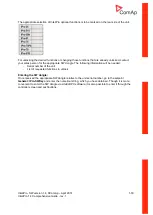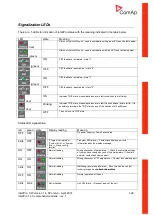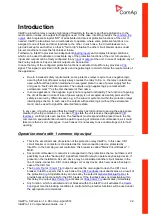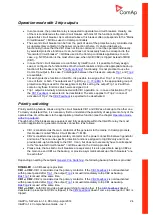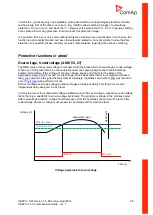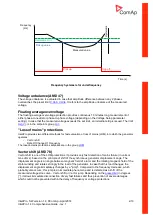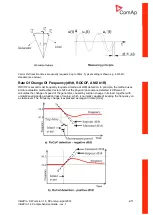
InteliPro, SW version 1.4,
©
ComAp
–
April 2014
InteliPro 1.4 Comprehensive Guide - rev. 1
2-12
In case that absolute value of this tangent overreaches a preset
. It is a
fast protection, similar to Vector shift, however, unlike Vector shift, which detects immediate
phenomena, the tangent calculation requires a certain time for evaluation. In ComAp protection relays,
the evaluation time for ROCOF protection can be adjusted by setpoint
curve cycles being taken into evaluation from 1 to tens of cycles (each having 20ms). This allows
setting up the ratio between the evaluation speed and sensitivity to nuisance trips.
Overcurrent: definite-time, IDMT and with voltage control
InteliPro provides three types of mains-overcurrent with different setting of the protection delay:
Definite time overcurrent (ANSI 50):
The trip is issued in a given delay after the current in any phase exceeds preset
. The
setting is done using the setpoints in the
IDMT overcurrent (ANSI 51)
The IDMT (inverse definite minimum time) overcurrent protection stage evaluates the true RMS value
of the current independently in any of the 3 phases. The stage provides delayed overcurrent trip,
based on calculation of the trip delay according to the trip curve:
The delay, i.e. the IDMT curve shape is to be prescribed by the DNO, based on the calculations of
short-circuit conditions in the point of the generator connection. The grid protections are coordinated
and allow for isolating the faults by the protections which are located closer to the short-circuit area.
This way, the discrimination of the breakdown point is done by the short-circuit current magnitude
allowing the generator to ride-through a distant faults and contribute to recover the mains voltage after
the fault is disconnected. The setting is done using the setpoints in the group
The shape of IDMT curve can be selected using the parameter
. If the option IDMT is
selected, the shape is given by the following formula:
I> Del
I>T Del
*

